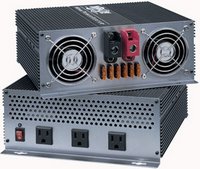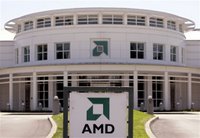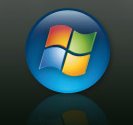Power Draw

I spoke not too long ago about heat. The amount of heat that is in a case is directly linked to how much power a machine draws, the more the power draw, the higher the heat output. With last weeks news of two new graphic cards from NVIDIA, I felt I'd touch on the insane power requirements that the industry plans to throw on us.
I remember reading a story a while back about a reviewer who was trying to get a top-of-the-line system with some new components up and running. The system had the now-normal complement of two video cards, a dual-core CPU, and the other standard components. The funny thing was that he didn't have an issue getting the machine to power on, but he had an issue with keeping it on. As soon as he would enter a benchmark or high-stress application, the machine drew enough power to actually blow the circuit breaker in his office. The only fix was to run an extension cord from an outlet on another circuit, and power the system with 2 power supplies.
Current systems in the Enthusiast category, or Exotic as I like to call it, can require upwards of 600 watts of power. That's 10 60-watt light bulbs, and that's the output from the PSU. It's AC input may well exceede 750 watts. Now these are only the most Exotic of the Exotic, but with NVIDIA's recent announcement, things may change.
The next generation of graphics processors, or video cards, will indeed be more hungry than anything we've seen. Current cards can draw upwards of 150 watts, but this new category of cards will push the limits of 250 watts. What's worse, these new cards will be doing more processing, which means that draw will be more constant than current cards. With a pair of these, you could easily be pushing 500 watts, just in video processing.
While the Exotic market will feel the power draw more than the standard consumer, the roll-out of Windows Vista promises to push the power up another notch across the board. While preliminary testing with high-end equipment is showing a minimal power increase with the new Windows, the percentages will be much higher on consumer equipment as they struggle to get the fancy Aero interface drawn.
What power requirements will come in the future is still up in the air. Core 2 Quad, AMD's 4x4 initiative, SLI and CrossFire all bring to our table incredible performance advancements, but at the cost of electricity. Atleast you won't need a space heater anymore to keep your feet warm, just put your PC under the table.



















